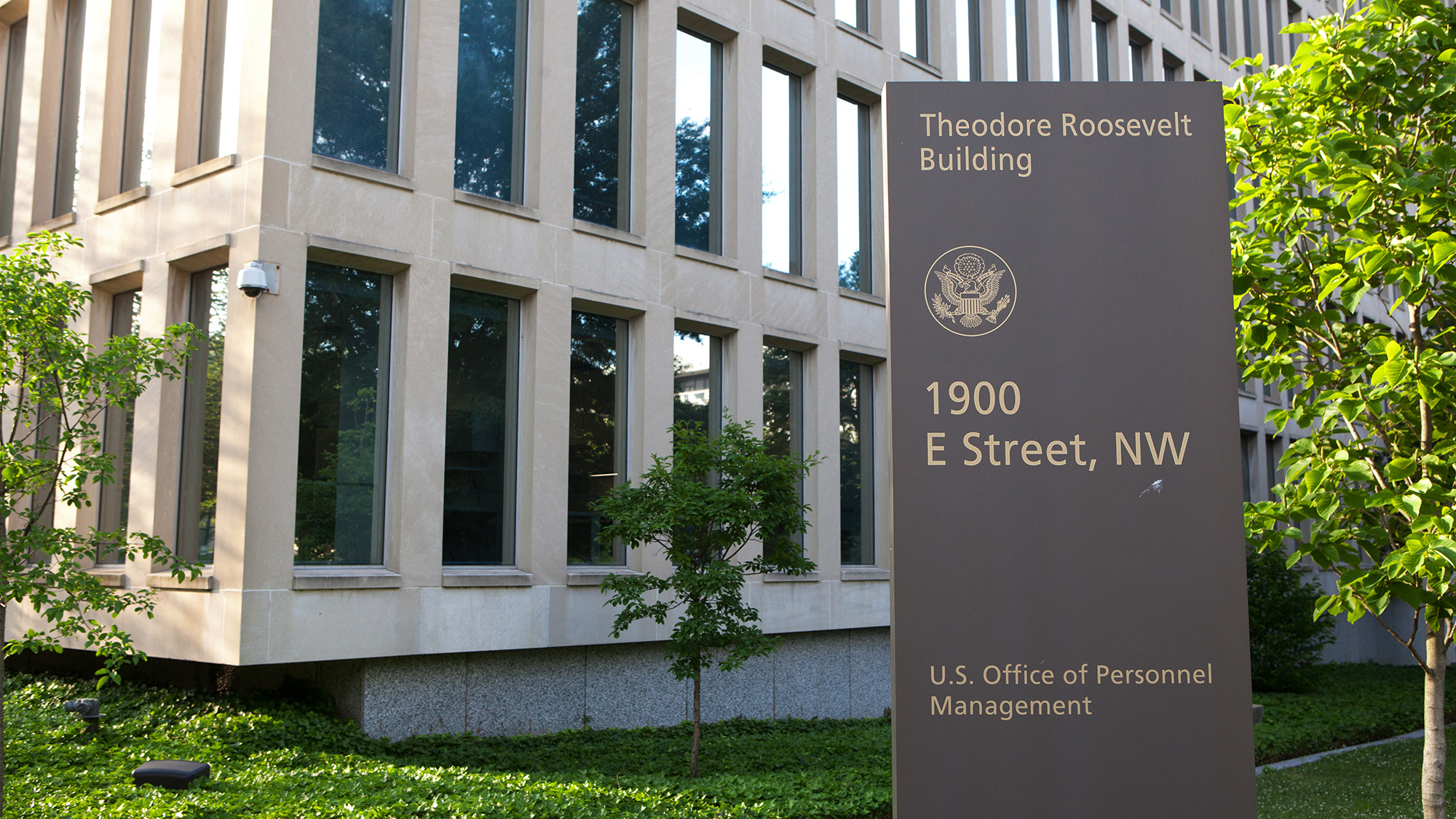Erica Newland is counsel at Protect Democracy and co-manager of the separations of powers team.
How a proposed regulation protects the civil service from politicized attacks: A look at the Biden administration’s response to Schedule F
- September 28, 2023

On September 18th, the Office of Personnel Management (OPM) announced a proposed rule to reinforce long-standing protections for federal civil servants. The rule is part of the Biden administration’s response to an executive order issued by President Trump late in his term, titled Creating a Schedule F in the Excepted Service. That order laid the groundwork for the Trump administration to fire tens or hundreds of thousands of civil servants across the federal government and replace them with partisan loyalists.
But time ran out on Schedule F: President Biden took office before the order could be implemented and then rescinded it in January 2021. OPM’s proposed rule is the Biden administration’s follow-on effort to protect the civil service from politicized attacks, whether in the form of another Schedule F order or a similar effort to purge the federal workforce like many 2024 Republican presidential candidates have promised.
If OPM’s proposed rule becomes final, it will slow the process of implementing a future Schedule F, and make it harder for a future administration to justify departing from historical practice, by codifying long-standing interpretations of key rights and definitions in civil service law. Through the rule, then, OPM proposes to strengthen a critical part of our democracy — a nonpartisan, expert federal workforce. And it would help protect the basic employment rights of federal civil servants who swear an oath not to the person of the president, but to the Constitution and laws of the United States.
How is the civil service structured?
The civil service is the federal government’s civilian workforce. It employs almost 2.2 million people across the country and has three components: the competitive, excepted, and senior executive services. Most of the federal workforce is in the competitive service, which includes just under 1.5 million people. These employees occupy a diverse array of positions — from physicians and air traffic controllers to budget analysts and agriculture economists. As the name suggests, these employees are hired using competitive, merit-based processes, often involving a written test or other evaluation of a candidate’s knowledge and skills. Competitive service employees also have strong procedural rights and protections against adverse employment actions including suspensions, reductions in pay or position grade, and removal.
In the excepted service, employees may be hired through more flexible procedures and enjoy somewhat more limited protections against adverse employment actions. The excepted service includes just under 700,000 employees and comprises both agency-specific personnel systems established by statute and a series of “schedules” — or categories of employees across agencies — labeled A-E established by the president and OPM. Generally speaking, excepted service positions are ones for which competitive hiring procedures are not practical and more streamlined, discretionary hiring instead is required. These positions include, for example, Schedule A employees, who serve as chaplains and attorneys and in scientific roles, and Schedule D positions in the Pathways and Presidential Management Fellows Programs.
The third part of the civil service is the senior executive service, which comprises a small cadre of senior management officials across the federal government who rank just below the level of presidential appointees. Most senior executives are career civil servants; only ten percent of the senior executive service may be filled by political appointees.
The current civil service system was established by a series of statutes dating back to the Pendleton Act of 1883, and was designed to replace a political “spoils system” in which federal government jobs were awarded and retained on the basis of personal and political loyalty. The spoils systems produced a government that was both corrupt and ineffective — leading reformers to craft a professional civil service in which jobs instead are awarded on the basis of merit (and competition where appropriate) and most employees have meaningful protections against being demoted or fired for reasons other than poor performance or misconduct. The resulting federal workforce is more effective and efficient, and thus more capable of delivering for the American people.
What was Schedule F?
Trump’s executive order would have added a new category to the excepted service called Schedule F, which covered positions purportedly of a “confidential, policy-determining, policy-making, or policy-advocating character.” Although that phrase historically has referred only to political appointees (typically a small number of officials in Schedule C who are appointed by and serve at the pleasure of the current president or other senior appointees and generally have no expectation of continuing into a new administration), the Trump administration intended to extend the phrase to cover tens of thousands of employees across the executive branch, including career civil servants in both the competitive service and other excepted service schedules. (Unlike political appointees, “career” employees generally are hired without the involvement of the president and, assuming satisfactory performance and conduct, can expect to serve across presidential administrations.) The purpose of adopting such a broad definition as part of Schedule F was to create a larger contingent of federal employees the Trump administration could essentially fire at-will and replace — an arrangement Schedule F made possible by invoking a statutory exception (found at 5 U.S.C. 7511(b), for confidential and policy-making positions) to adverse action protections applicable to most competitive and excepted service positions other than those in Schedule C.
What would OPM’s proposed rule do?
OPM’s proposed rule would reinforce key rights and definitions in existing law to protect federal workers from politicized firings.
- The rule clarifies and reinforces adverse action protections: Adverse action protections are the rights a federal employee enjoys when faced with a suspension, removal, furlough, or reduction in pay or position grade. Depending on the position an employee occupies and the action taken, these protections can include a right to written notice of the reasons for a proposed adverse action and an opportunity to respond before a decision is made, as well as the ability to appeal that action to the Merit Systems Protection Board (MSPB). (For more information on the adverse action process, see this MSPB explainer.) Importantly, these protections exist not to insulate poor performers from consequences, but rather to ensure that federal employees are retained on the basis of merit and shielded from retaliation (e.g., for whistleblowing) and discrimination, including on the basis of their political affiliation.
OPM’s proposed rule clarifies that when an employee is moved from the competitive service to the excepted service, or from one excepted service schedule to another, they retain the adverse action protections they accrued in their original position. This clarification is important because the Schedule F executive order specifically sought to strip covered employees of adverse action protections in order to make them easier to remove.
- The rule draws on legislative history and case law to clarify a key definition: The Schedule F executive order asked federal agencies to identify positions of a “confidential, policy-determining, policy-making, or policy-advocating character” and petition OPM to move them from their then-current placements in the competitive service or other excepted service schedules into Schedule F. The order outlined a broad set of criteria for identifying such positions, to include positions that substantively participate in policy formulation or the development or drafting of regulations; supervise attorneys; directly report to presidential appointees or agency heads; are located in an agency’s or agency component’s executive secretariat; or conduct collective bargaining negotiations on the agency’s behalf. Anywhere from tens to hundreds of thousands of career employees occupy positions that arguably meet this criteria. But as OPM explained in its proposed rule, the Trump administration’s interpretation of the phrase “confidential, policy-determining, policy-making, or policy-advocating” was inconsistent with how OPM, Congress, and the Merit Systems Protection Board have understood that phrase for decades.
The relevant legislative history and case law make clear that the phrase is meant to refer only to noncareer political appointees, who are identified by their “close working relationship with the President, head of an agency, or other key appointed officials who are responsible for furthering the goals and policies of the President and the Administration.” Such political appointees, OPM explained, carry “no expectation of continued employment beyond the presidential administration during which the appointment occurred.” In other words, correctly understood, the phrase “confidential, policy-determining, policy-making, or policy-advocating” refers only to a small number of political appointees who expect to serve only for the duration of one president’s administration, not the thousands of civil servants (including career employees) the Trump administration believed should be placed in Schedule F despite their otherwise non-political nature, so that they too could be easily removed and replaced.
- The rule also establishes a new process for reclassifying employees: OPM’s proposed rule creates a new set of procedures agencies must follow when moving employees into a new excepted service schedule. These procedures are intended to function as an additional guardrail against the kind of improper position reclassifications that would have occurred at scale and across agencies if the Trump administration had been able to implement Schedule F. As the U.S. Court of Appeals for the D.C. Circuit explained in NTEU v. Horner, placement in the competitive service is “the norm rather than the exception.” By creating a comprehensive process to regulate the potential movement of positions into a new excepted service schedule, OPM seeks to enforce that long-standing norm and guard against partisan manipulation of the federal workforce.
Why is OPM’s proposed rule necessary?
Protecting the civil service is critically important for American democracy. Schedule F would have harmed our democracy by creating a cadre of tens or hundreds of thousands of civil servants loyal to the person of the president rather than the Constitution and laws of the United States. And it would have undermined the effectiveness of our government by installing partisan loyalists (who might turn over from one administration to the next) in the place of expert employees hired and retained on the basis of merit, as Congress envisioned when it enacted civil service laws. Diminishing the stability and expertise of our government would significantly diminish its capacity to deliver for the American people. And it would leave us with a government oriented not toward serving the needs of the American people, but toward serving the president politically.
Can a future presidential administration roll back the rule?
A future administration may try to rescind or replace this proposed regulation (assuming it’s ultimately implemented). However, to do so, it would have to provide a sufficient explanation as to why it is departing from the policies both outlined in the rule and supported by the substantial historical record outlined in the proposal. Any rescission of the final rule would certainly face legal challenges.
If the rule can be rolled back, why can’t Congress take more permanent action?
Congress could pass a law to protect against future attempts to purge the civil service and install partisan loyalists. Successive bills introduced by Sen. Kaine and Rep. Connolly in the 117th and 118th Congresses, for instance, have attempted to prevent the return of Schedule F but have not gained sufficient traction and are unlikely to do so during this Congress. That means that if timely government action is going to protect against the return of Schedule F, it must come from the Biden administration.
Related Content
It can happen here.
We can stop it.
Defeating authoritarianism is going to take all of us. Everyone and every institution has a role to play. Together, we can protect democracy.
Donate
Sign Up for Updates Sign Up for Updates
Explore Careers Explore Careers
How to Protect Democracy How to Protect Democracy



